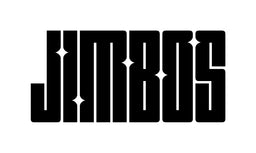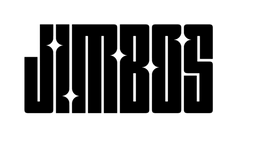How to Measure Paint Thickness Before Polishing
Before you ever touch a polisher to paint, you should know exactly how much clear coat you’re working with. In this guide, you’ll learn how to measure paint thickness safely, what those readings mean, and how to use that information to avoid burning through your paint — all while prepping for Picture Perfect Polish.
Estimated Reading Time: ~9 minutes
Why Paint Thickness Matters
Every time you polish or compound a vehicle, you remove a microscopic layer of clear coat. Knowing how thick (or thin) that layer is helps you determine how aggressively you can polish — or whether you should at all. Too much correction can lead to permanent damage or clear coat failure.
- ✅ Helps prevent burning through paint
- ✅ Determines how aggressive your polish and pad should be
- ✅ Identifies repainted or repaired panels
- ✅ Ensures even correction across the vehicle
What You’ll Need
- Paint Thickness Gauge (electronic digital gauge)
- The Super Soaper for pre-polish washing
- Picture Perfect Polish for correction
- Tough As Shell for protection
- Microfiber towels and clean pads
Understanding Paint Layers
Automotive paint typically consists of three layers:
- Primer: The base layer that promotes adhesion.
- Base Coat: The color layer (metallic, solid, or pearl).
- Clear Coat: The protective layer that adds gloss and UV protection.
The clear coat usually makes up about 30–40% of total paint thickness. That’s the layer you’re working on when you polish — and it’s very thin.
Average Paint Thickness Ranges
| Paint Type | Typical Thickness (Microns) | Typical Thickness (Mils) | Polishing Risk Level |
|---|---|---|---|
| Factory OEM Paint | 90–150 μm | 3.5–6.0 mils | Low to moderate |
| Repainted Panels | 180–250 μm+ | 7–10 mils | Low (thicker layer) |
| Thin or Aged Paint | 70–100 μm | 2.5–4.0 mils | High — polish with caution |
How to Measure Paint Thickness Step-by-Step
Step 1: Clean the Surface
Wash your vehicle thoroughly using The Super Soaper. Any dirt or film can affect readings. Dry completely with a clean microfiber towel.
Step 2: Calibrate Your Gauge
Most gauges come with calibration plates. Always calibrate on both metal and plastic test panels before taking readings to ensure accuracy.
Step 3: Take Multiple Readings
Check several spots on each panel — hood, doors, fenders, roof, trunk — and note any major variations. Large differences may indicate repainted sections or bodywork.
Step 4: Interpret the Results
If your readings are consistently below 90μm, you should stick to a light polish. Anything under 70μm is very thin and should be handled with extreme caution.
Step 5: Adjust Your Technique
Use softer pads and lower machine speeds for thinner paint. Picture Perfect Polish can finish perfectly even with minimal cut, making it safe for delicate clear coats.
Safe Correction Starts with Knowledge
Picture Perfect Polish gives you full control — from light refinement on thin paint to heavy correction on thick panels.
Shop Picture Perfect Polish Buy on AmazonPro Tips for Measuring Paint Safely
- → Always measure before compounding or wet sanding.
- → Record your readings per panel for future reference.
- → Use consistent gauge pressure for accurate readings.
- → Avoid reading over decals, edges, or uneven surfaces.
- → Always test multiple spots — one reading isn’t enough.
What to Do If Paint Is Too Thin
If you discover low readings (below 80μm), don’t panic. Instead, focus on improving gloss rather than removing defects. Use Picture Perfect Polish with a soft foam pad on low speed. You’ll safely enhance clarity without cutting too deep.
Then protect the surface with Tough As Shell or The Gloss Boss ceramic coating to lock in the finish and add UV protection.
Thin Paint? No Problem.
Tough As Shell protects even the most delicate finishes with durable, high-gloss ceramic protection.
Shop Tough As Shell Buy on AmazonRelated Reading
- The Ultimate Guide to Paint Correction for Beginners
- Compound vs Polish — What’s the Real Difference?
- The Correct Pad and Polish Combinations for Every Job
- The Ideal Lighting Setup for Paint Correction
- How to Protect Polished Paint for Maximum Longevity
FAQs
What is a normal paint thickness reading?
Most factory paint measures between 90–150μm (3.5–6.0 mils). Repaints can be thicker, while older vehicles may measure thinner.
How much paint does polishing remove?
Each polishing session removes around 2–5μm of clear coat, depending on pad and polish aggressiveness.
Can I polish if the reading is below 80μm?
Yes, but only with a light finishing polish like Picture Perfect Polish on a soft pad at low speed. Avoid compounding.
What gauge should I buy?
Look for a dual-metal gauge (ferrous/non-ferrous) with micron and mil readouts. Models from brands like Elcometer and Defelsko are highly accurate.
Does measuring paint thickness work on plastic panels?
Only if your gauge supports non-metal readings. Many budget models don’t read correctly on plastic or fiberglass.



